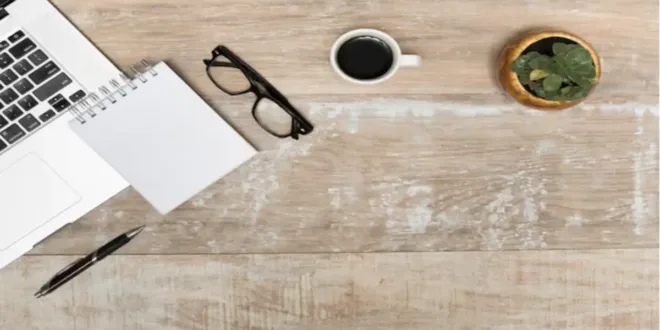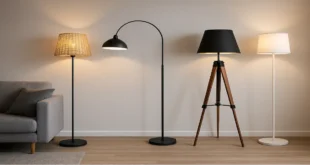The Ultimate Guide to Choosing the Perfect Kitchen Work Top
When it comes to designing a kitchen or workspace, one of the most crucial elements that often gets overlooked is the worktop. A high-quality worktop can be the difference between a functional, aesthetically pleasing workspace and one that feels unfinished or inconvenient. This guide explores everything you need to know about choosing the right worktop, from material options to maintenance and style considerations.
Introduction to Worktops
A worktop, also known as a countertop or benchtop, is a flat surface in kitchens, bathrooms, or workspaces where various activities take place. It’s not only a practical surface for cooking or other tasks but also a significant design feature that can dramatically impact the appearance and feel of your space. Choosing a worktop involves a balance of durability, aesthetics, cost, and maintenance.
Why the Right Worktop Matters
The right worktop can improve your kitchen’s functionality and add significant value to your home. Worktops are used daily, often for heavy-duty tasks, and need to withstand heat, stains, and impact. Additionally, they play a vital role in the overall design and look of a space. In a kitchen, the worktop is a focal point, which means choosing the right material and finish can transform your room from ordinary to extraordinary.
Key Considerations When Choosing a Worktop
When deciding on a worktop, here are several factors to consider:
- Material – Worktops come in a wide range of materials, each with its pros and cons.
- Cost – Budgeting for a worktop can vary significantly based on material choice, brand, and installation costs.
- Durability – Some materials are more resistant to scratches, stains, and heat than others.
- Maintenance – Consider the time and effort required to keep the worktop looking its best.
- Aesthetics – Worktops come in various colors, patterns, and textures to match your design vision.
- Environmental Impact – Many people now prioritize eco-friendly materials that leave a smaller carbon footprint.
The Most Popular Worktop Materials
Here are some popular worktop materials to consider:
- Granite
- Quartz
- Marble
- Laminate
- Wood
- Stainless Steel
- Concrete
- Glass
Let’s dive deeper into each type.
Granite Worktops
Granite is a natural stone known for its durability and timeless elegance. It is highly resistant to heat, scratches, and stains, making it a popular choice for high-use areas. Granite worktops come in a wide range of colors and patterns, so it’s easy to find one that matches your kitchen’s aesthetic.
Pros of Granite Worktops:
- Durability – Granite is extremely hard and durable.
- Heat Resistance – You can place hot pots directly on granite without causing damage.
- Unique Patterns – Each slab of granite is unique, offering a one-of-a-kind look.
Cons of Granite Worktops:
- Cost – Granite can be expensive, particularly for large kitchens.
- Porous Nature – It requires sealing to prevent staining from liquids.
- Heavy Weight – Granite is heavy and may require additional structural support.
Quartz Worktops
Quartz is an engineered stone made from natural quartz combined with resin. Quartz worktops offer a sleek, modern look, are highly durable, and come in a variety of colors and patterns. Unlike granite, quartz is non-porous, making it resistant to stains and easy to maintain.
Pros of Quartz Worktops:
- Non-Porous – Doesn’t require sealing and resists staining.
- Consistent Patterns – Quartz can be manufactured to have a consistent look.
- Low Maintenance – Easy to clean and maintain.
Cons of Quartz Worktops:
- Heat Sensitivity – Quartz can be damaged by high temperatures.
- Expensive – Quartz is often on par with granite in terms of cost.
- Not Natural – Some people prefer the natural look of granite or marble over engineered quartz.
Marble Worktops
Marble exudes luxury and sophistication. Known for its striking veins and unique patterns, marble worktops add elegance to any kitchen. However, marble is softer than granite and quartz, making it more prone to scratches and stains. It’s also heat-resistant but requires more care to keep it looking pristine.
Pros of Marble Worktops:
- Elegant Appearance – Marble has a classic, timeless look.
- Heat Resistant – Ideal for baking and pastry work.
- Unique Patterns – Each piece of marble is distinctive.
Cons of Marble Worktops:
- Porous and Stain-Prone – Marble is prone to staining from acidic substances like vinegar or lemon juice.
- Requires Regular Sealing – Needs to be resealed regularly to prevent damage.
- Easily Scratched – Marble is softer and scratches more easily than other stones.
Laminate Worktops
Laminate worktops are a cost-effective option that comes in various colors and patterns, including those that mimic more expensive materials like wood and stone. Made from plastic, laminate worktops are easy to clean and install, but they don’t offer the same level of durability as natural stone.
Pros of Laminate Worktops:
- Affordable – One of the most budget-friendly options.
- Variety of Styles – Available in a wide range of colors and patterns.
- Low Maintenance – Easy to clean and doesn’t require sealing.
Cons of Laminate Worktops:
- Not Heat Resistant – Can be damaged by hot pots and pans.
- Less Durable – Prone to scratches and cuts.
- Lower Resale Value – Laminate doesn’t add the same resale value as natural stone.
Wood Worktops
Wood worktops offer a warm, rustic look that works well in traditional and modern kitchens. However, wood requires regular maintenance and care to prevent damage from water and heat. Some popular options include oak, maple, and walnut.
Pros of Wood Worktops:
- Natural Beauty – Adds warmth and charm to the kitchen.
- Easy to Repair – Scratches can be sanded out.
- Eco-Friendly Options – Many sustainable wood options are available.
Cons of Wood Worktops:
- Requires Maintenance – Needs regular sealing and oiling.
- Prone to Water Damage – Can warp or stain if exposed to too much moisture.
- Easily Scratched – Wood is softer and prone to damage from knives and other sharp objects.
Stainless Steel Worktops
Stainless steel worktops are commonly found in commercial kitchens due to their durability and easy maintenance. They’re also heat-resistant, which makes them ideal for busy kitchens. However, stainless steel can show scratches and fingerprints easily.
Pros of Stainless Steel Worktops:
- Durable and Long-Lasting – Extremely hard-wearing and resistant to stains.
- Heat Resistant – Can withstand high temperatures without damage.
- Hygienic – Easy to clean and maintain.
Cons of Stainless Steel Worktops:
- Can Look Industrial – Not everyone likes the industrial look of stainless steel.
- Easily Scratched – Shows scratches and fingerprints easily.
- Expensive – Often more expensive than other options.
Concrete Worktops
Concrete worktops have become popular in modern kitchens due to their industrial look. Concrete can be customized in various colors and textures, allowing for a unique, personalized worktop. However, it can crack over time and needs regular sealing.
Pros of Concrete Worktops:
- Customizable – Can be tailored to your color and texture preferences.
- Durable and Heat Resistant – Concrete is sturdy and can withstand heat.
- Unique Look – Perfect for an industrial or contemporary aesthetic.
Cons of Concrete Worktops:
- Requires Regular Sealing – Needs to be sealed to prevent stains.
- Heavy – Requires additional support due to its weight.
- Can Crack – Concrete can develop cracks over time if not properly maintained.
Glass Worktops
Glass worktops offer a modern, sleek look and are highly resistant to heat and stains. Available in a variety of colors and finishes, glass worktops can add a unique visual element to any kitchen. However, they are prone to showing fingerprints and scratches.
Pros of Glass Worktops:
- Heat and Stain Resistant – Perfect for high-use kitchens.
- Modern Look – Sleek, stylish, and available in many colors.
- Non-Porous – Easy to clean and maintain.
Cons of Glass Worktops:
- Prone to Scratches – Can scratch easily, requiring careful use.
- Shows Fingerprints – Needs regular cleaning to keep smudge-free.
- Expensive – Often priced higher than other worktop materials.
Maintenance Tips for Different Worktop Materials
To keep your worktop looking its best, follow these maintenance tips based on the material:
- Granite: Seal every 1–2 years to prevent staining.
- Quartz: Clean with mild soap and water; avoid harsh chemicals.
- Marble: Wipe spills immediately and avoid acidic cleaners.
- Laminate: Avoid high heat and sharp objects.
- Wood: Oil regularly to maintain its appearance and prevent warping.
- Stainless Steel: Use stainless steel cleaner to prevent smudges and scratches.
- Concrete: Seal every few years and avoid abrasive cleaners.
- Glass: Clean with a glass cleaner and avoid using abrasive pads.
Conclusion: Choosing the Best Worktop for Your Needs
Choosing the right worktop depends on balancing aesthetics, budget, durability, and maintenance. While granite, quartz, and marble offer timeless beauty and durability, laminate and wood provide more budget-friendly and versatile options. Stainless steel, concrete, and glass worktops provide unique, modern looks but come with higher price tags and specific maintenance requirements.
No matter your preference, each worktop material has distinct features that make it suitable for different lifestyles and kitchen designs. Take time to evaluate your kitchen needs, aesthetic preferences, and budget before making a final decision. Investing in the right worktop can enhance both the functionality and appearance of your kitchen, making it a worthy addition to your home.
Frequently Asked Questions (FAQs)
What is the best material for a kitchen worktop?
Choosing the best kitchen worktop material depends on your needs and style preferences. Granite, quartz, and marble are popular for their durability and classic beauty, while wood and laminate offer budget-friendly, warm options. For a modern look, materials like concrete and stainless steel may suit you better. Consider each material’s durability, maintenance, and cost to find the right fit for your kitchen.
How do I maintain a granite worktop to keep it looking new?
Maintaining a granite worktop is straightforward but essential for keeping its appearance. Clean it daily with mild soap and water, avoiding harsh chemicals that may damage the sealant. Re-seal your granite worktop every 1–2 years to prevent stains and enhance its natural shine. Regular upkeep will keep granite looking fresh and vibrant over time.
Are quartz worktops resistant to stains and scratches?
Yes, quartz worktops are engineered to be non-porous, which makes them highly resistant to stains. They are also durable against scratches; however, it’s best to avoid cutting directly on the surface to prolong its lifespan. Quartz offers a low-maintenance and resilient option for busy kitchens.
Can I place hot pans directly on a wood worktop?
It’s generally not recommended to place hot pans directly on a wood worktop, as it can cause scorch marks and warping over time. Use a trivet or heat pad to protect the wood from direct heat exposure. Regularly oiling your wood worktop also helps it withstand daily wear and tear.
What are some budget-friendly worktop options that still look great?
For those on a budget, laminate worktops offer a variety of colors and patterns, often mimicking the look of more expensive materials like stone or wood. Another affordable choice is wood, which brings warmth and character to a space. Both options provide excellent functionality without breaking the bank.
How do I choose the right worktop color to match my kitchen style?
Selecting the right worktop color involves considering your kitchen’s overall color scheme and style. For a timeless look, neutral tones like whites, blacks, and grays in granite or quartz are popular. For a rustic feel, natural wood shades pair beautifully with warm or earthy kitchen colors. Modern kitchens often feature sleek, solid colors like white or dark gray in materials like glass or concrete.
READ ALSO: Rent in a Retirement Village: What You Need to Know Before Making the Move




